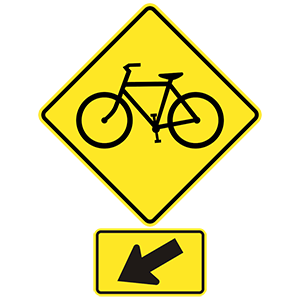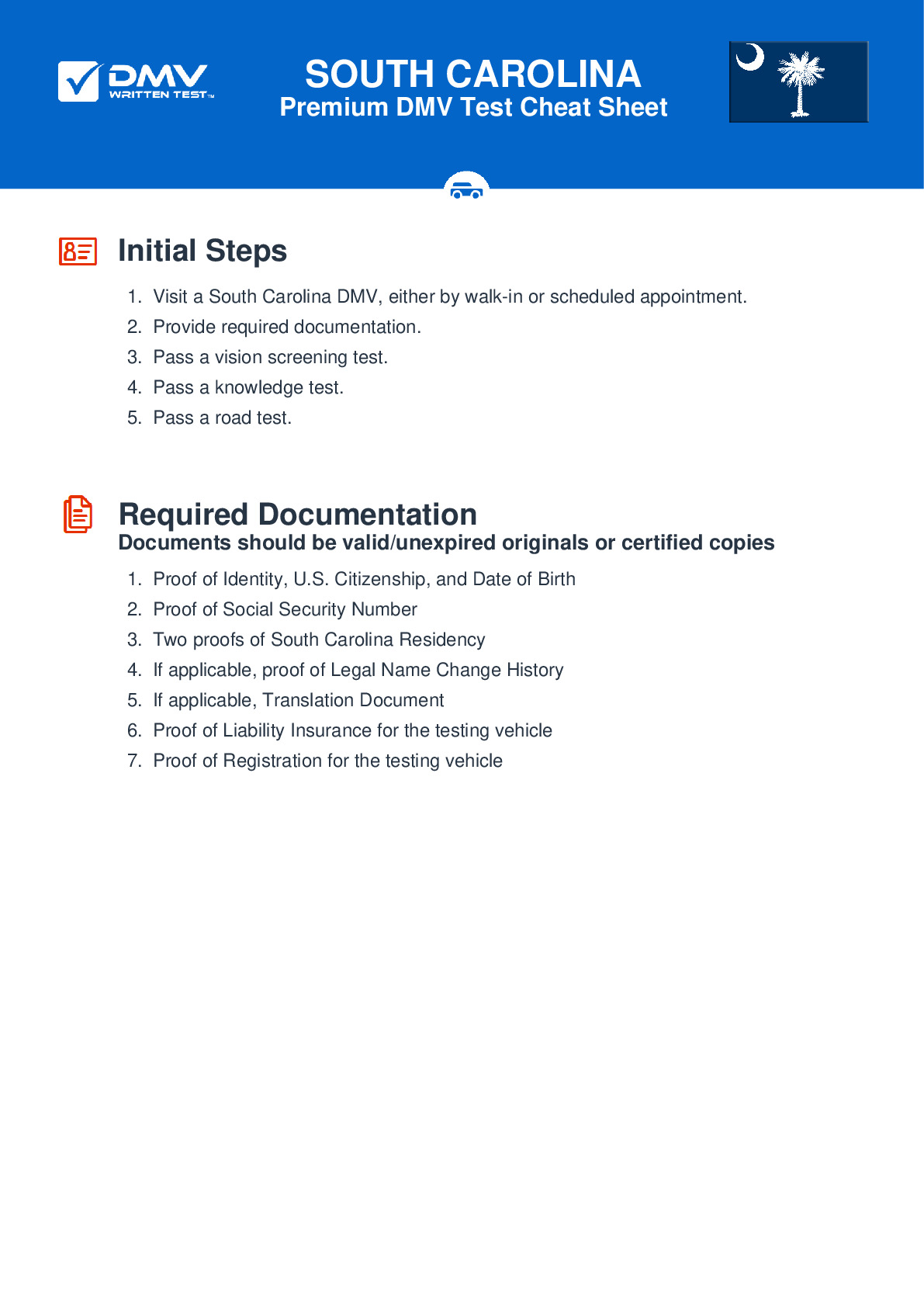2025 South Carolina Permit Test 12
The following questions are from real DMV written tests. These are some of the actual permit questions you will face in South Carolina. Each permit practice test question has three answer choices. Select one answer for each question and select "grade this section." You can find this button at the bottom of the drivers license quiz. For a complete list of questions and answers for South Carolina please visit https://cheat-sheets.dmv-written-test.com/en/south-carolina/car.
Number of Tests
Number of Question
Passing Score
9. When faced with an oncoming car to the left and a bicyclist to the right, you should:
Explanation
When there is more than one potential hazard on the road, you should ensure that you only have to deal with one of them at a time. For example, when there is a bicyclist on the right that you want to pass and an oncoming car to the left, you should not try to squeeze between both at the same time. Instead, let the oncoming car pass, and then pass the bicyclist.
10. You should always travel:
Explanation
The speed at which you should drive your vehicle depends on road conditions, the weather, and the legal speed limit. You may never drive above the legal speed limit. Decrease your speed when anything makes conditions less than ideal.
11. You are driving up a hill and are approaching a heavy truck from the rear. You should know that:
Explanation
Drivers must be aware that large vehicles often travel at a speed slower than the posted speed limit, especially when driving on an incline, and should use caution when approaching a large vehicle from the rear. When on a hill with limited visibility, it is unlawful to pass another vehicle.
12. This road sign means:

Explanation
This sign (with the arrow below) indicates the location of a bicycle crossing/path. Drive with caution around this sign because bicycles likely regularly cross or ride beside traffic in the area.
13. When changing lanes:
Explanation
Before changing lanes, you should check your side mirrors and look over your shoulder to make sure it is safe to proceed.
14. You should honk your horn when you:
Explanation
Your horn should be used as a warning in situations where you think another driver or a pedestrian does not see you. For example, if a child begins to run into the street in front of your vehicle, you should sound your horn.
15. You may avoid the risks of alcohol-related crashes by:
Explanation
The only way to avoid the risks of drinking and driving is to decide before you start drinking that you are not going to drive. Because alcohol affects your judgement, it will be harder for you to make safe decisions after you have started drinking.
16. You are involved in a minor collision at an intersection. There are no injuries and there is very little vehicle damage. You should:
Explanation




